#celtic myth
Photo
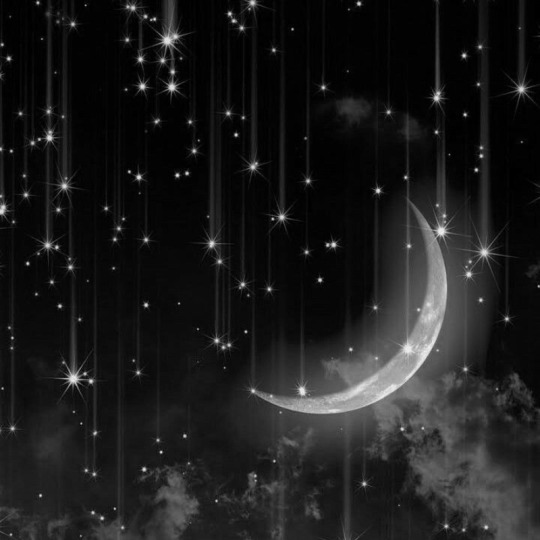




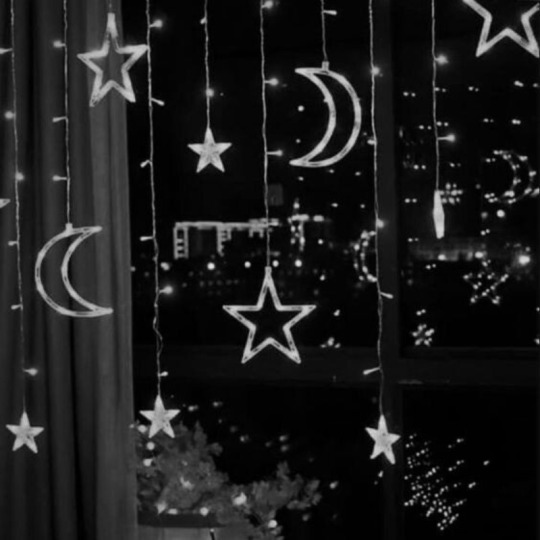



celtic mythology: rhiannon
rhiannon is believed to be a goddess of horses, the moon, forgiveness, rebirth, and fertility.
579 notes
·
View notes
Text
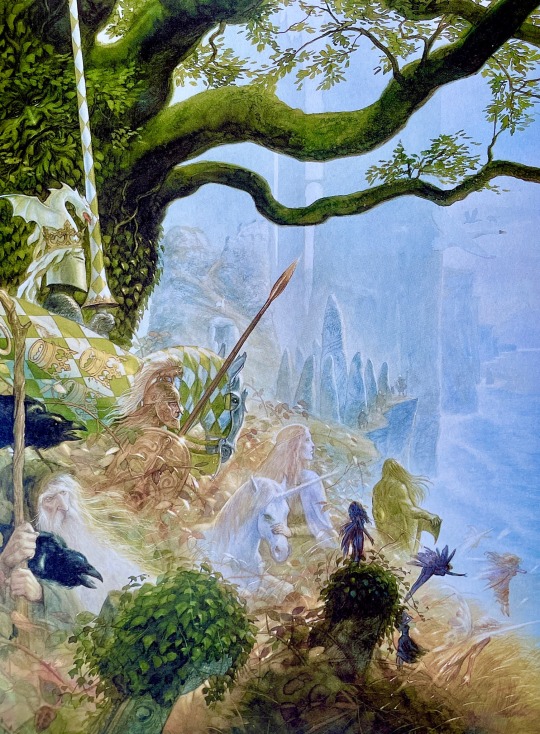
Celtic Myth by John Howe, 1996
461 notes
·
View notes
Text
The Real Mother of the Gods
Random internet articles will tell you how Danu is the mother of the Irish gods, like some overarching ancestral figure.
When reading the actual lore, this idea is pretty false. There may be a Danand, mother to three gods, but no great Danu. This is even argued, as a better translation may reveal they are three gods of skill, the word for skill confused or made into the name of a goddess.
While I was reading the verse portion of the Lebor Gabála Érenn volume 4 (LGE) on the tuatha, I discovered something interesting. Ethniu is named as mother to seven of the major gods: Luichtaine, Creidne, Goibnu, Dian Cecht, Nuada, Dagda, and Lugh.
Additionally, in the Cath Maige Tuired, if I am not mistaken, Ogma is named as one of her sons.
It is a shame this isn't discussed more. The prose text of the LGE does not mention this either. It mostly recounts who is the father to whom.
Ethniu is daughter of Balor, a Fomorian king. The Fomorians share ancestors with the gods, and live on islands close to Ireland.
Folk or fairy tales tell how Balor heard a prophecy that his grandson would kill him, so he locked Ethniu up, surrounded only by women, until a man looking for a magic cow Balor stole sneaks in and she gets pregnant with Lugh.
In the LGE it is mentioned she is given to Cian, a god, in marriage and they have Lugh.
But turning to the verse texts in the LGE, here is the small passage:
"They were powerful against their firm conflict,
The seven lofty great sons of Ethliu.
Dagda, Dian Cecht, Credne the wright,
Luichne the carpenter, who was an enduring.
consummate plunderer,
Nuada who was the silver-handed,
Lug Mac Cein, Goibninn the smith."
(The names have variations of how they're spelled in the LGE.)
Her first six sons are over different skills/roles, a smith, wright, carpenter, a physician, a king, and a druid/wizard/warrior, but her son Lugh possess all of the skills and becomes the king of the gods after Nuada’s death.
I think Ethniu/Ethliu should get the credit for being mother of the gods.
#irish mythology#tuatha de danann#irish myth#pagan#irish lore#celtic myth#goddess#irish gods#witchblr
34 notes
·
View notes
Text

Let me tell you a tale of the swan prince and princess
Two young lovers by the name of Caer Ibormeith and Aengus
He searched the globe to find her and she sent him dreams
Yet when he laid eyes upon her he found she is not all she seems
She turned into a bird and looked up at him with deep black eyes
And so he made himself a swan as well, and swam off with her into the sunrise
This celtic tale is thought to be a basis for many swan tales including Swan Lake and The Swan Princess, but finding hard evidence for this is difficult as many swan tales exist. as always I encourage you to do your own research.
Caer Ibormeith is a goddess of dreams and prophecy, and she marries the god of beauty and youth Aengus Og after they "fly off together in the form of a pair of swans." Source: The Dictionary of Celtic Mythology by James MacKillop.
#inktober rise#inktober#inktober day 13#inktoberrise#inktober challenge#aengus og#swan princess#swan lake#celtic mythology#celtic myth#obod#bard#original poetry#original poets on tumblr#original poem#celtic paganism#irish folklore#caer ibormeith
35 notes
·
View notes
Text
I like how "the swan knight" (an archetype that includes the Arthurian Lohengrin) is basically a genderflipped version of the "Fairy Wife" Archetype
#knight of the swan#lohengrin#parzival#celtic myth#arthuriana#arthurian legend#arthurian legends#arthurian mythology#my thoughts
22 notes
·
View notes
Text
A lot of my discussion of previous scholarship concerning heroes in medieval Irish literature could be summarized as 'No, that's not a wider trend, Cú Chulainn is just Spiders Georg'.
70 notes
·
View notes
Photo



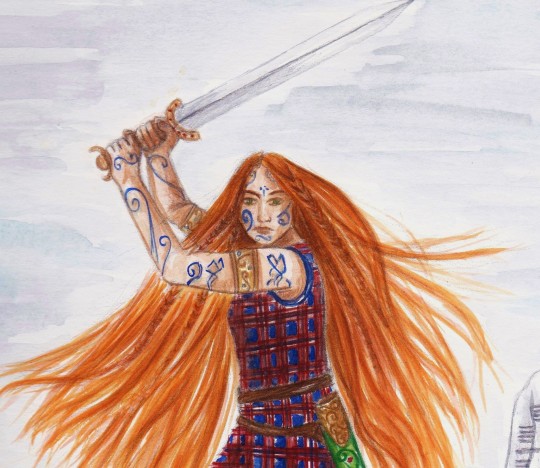



🎨♀Herstory+Celtic throwback♀🎨 - Graphite lineart and watercolour painting of the Scottish warrior-trainer Scáthach from Celtic myth for the 2014 FWW Stock Challenge on DeviantArt. I quite like how this painting turned out 😃 !
.
. 🎨Media: Watercolours over graphite drawing
. 🍀Other references: DeviantArt stock pic for the main pose, photographs of stones and Celtic swords and designs, self-picture for the skirt movement.
I wanted to draw a Celtic warrior-woman from Irish myth, so here is how I imagine Scáthach of Alba, a formidable warrior-woman with druidic skills who trained warriors in her renowned academy in the island of Skye in Alba (Scotland). She trained a lot of famous heroes, Cúchulainn among them. Her sister, Aoife, was also a great warrior-woman, even greater than herself.
.
. "If Cúchulainn would go to Scathach, the woman-warrior that lived in the east of Alban, his skill would be more wonderful still, for he could not have perfect knowledge of the feats of a warrior without that." (Lady Gregory's Cúchulainn of Muirthemne).
I wrote Scáthach's name and the names of some other famous warrior-women in Irish myth in the stones using the Celtic tree Ogham alphabet: The left stone includes the names of Nessa, Conchubar's mother, and queen Medb. The stone on the right has "Scáthach banlaoch" (Warrior-woman Scáthach), plus Ogarmach, the invader daughter of the King of Greece, and Macha.
.
I depicted Scáthach with woad skin-paint, flowing loose hair and a checked sleeveless, ankle-length dress. Although the Celts in Gaul, seemed to favour trousers when fighting, there is evidence that the Insular Celts often preferred dresses and short/long tunics to pants. The warrior-women of this time (c. 1st Century BC) are often described in the mythology as wearing long dresses and cloaks, loose hair, a great number of ornaments, and little to no armour. The same goes for the men (with short/long tunics instead of dresses), as Celts didn't seem to be great fans of wearing armour, preferring to go to battle fully decked in all their (often encumbering) finery and/or with bare chest or directly fully naked xD
🎨ArtStation
🎨Instagram
🎨 DeviantArt
#Celtic culture#Celtic mythology#scáthach#warrior women#My art#banlaoch#Celtic women#Celtic myth#Celts#Irish myth#Scotland#Ireland#cú chulainn#Scáthach of Alba#scathach#watercolours#graphite drawing#watercolour painting#Irish mythology#swordwoman#Celtic warrior#herstory#history#ancient times#ogham#aoife#medb#boudica#nessa#macha
44 notes
·
View notes
Text
Does your Púca like my crystal chakra? #dailyinkmonster #irishfolklore #celticmyth
#kim diaz holm#denungeherrholm#púca#puca#puck#irish folklore#celtic myth#daily inkmonster#art#video#shorts
8 notes
·
View notes
Text
asks for non-ofmd-fandom fics and hcs please!
i can write in these:
jane austen books and their movie adaptations
what we do in the shadows, tv show and movie
ramayana and mahabharata
greek mythology, norse mythology, most celtic mythology
dorothy sayers books
agatha christie books
moomins
adventure time
the wicked bargain
all oscar wilde plays, novel, and fairy tales
jeeves and wooster
the it crowd
schitt's creek
the way of the house husband
(if you're looking at my carrd you'll see HP. i *can* do HP but only *will* do HP for pay, which i then donate to trans lifeline)
#jane austen#wwdits#ramayana#mahabharata#greek myth#norse myth#celtic myth#dorothy sayers#agatha christie#moomins#adventure time#the wicked bargain#oscar wilde#jeeves and wooster#the it crowd#schitt's creek#the way of the house husband
3 notes
·
View notes
Note
why does Avalach have that nickname?
I assume you mean Avallac'h as the nickname, as Crevan (Fox) is his real name (translating into 'Fox' in unicorn & Irish; befitting, by the way, as Tuatha Dé Danann of the Irish side of Celtic myth are one of the core inspirations for elves in The Witcher).
Why Avallac'h, then?
The name is a Latinized derivative of Afallach, with the root of the word being afal "an apple." Afallach, a Brythonic god originating in Celtic myth, is best known for his associations with Ynys Afallach ‘The Island of Apples’ or the Isle of Avalon - a mythical island between life & death.
Giraldus identifies the Isle of Avalon with Glastonbury, in De Instructione Principium (1193 -9): ‘what is now called Glastonia was anciently called Insula Avallonia, for it is like an island, wholly surrounded by marshes, whence it is called in British Inis Avallon, that is the apple-bearing island.’
William of Mamlesbury, in The Antiquities of Glastonbury (1216), follows this tradition. Glastonbury ‘is also well known as by the name of Insula Avalloniae’. He says it may be ‘named after a certain Avalloc who is said to have lived there with his daughters on account of it being a solitary place.
A father to Modron - a mother goddess - Afallach or Avalloc is held to be the ruler of the "island of apple trees"; an otherworldly haven to which King Arthur (& Geralt) are taken at the end of their perils. It’s the mythic Celtic Elysium.
Meanwhile, Sapkowski himself deems Avallac'h the Welsh god of evil spirits:
"The son of the lunar Nudd is Gwyn. Against his name (Gwyn means White), son of Nudd is the dark god of battle and death, ruler of Tylwyth Teg, Welsh evil spirits. Gwyn (called Melwas in Cornwall and Avallach in Somerset) was the Hunter, the Hunter of the Dead Souls."
Not only are Gwyn (ruler of a fairy otherworld) & Avallach the same deity, but the similarity is apparent at first sight (Avallac'h's introduction is given under Devil's Mountain, Mount Gorgon, where he patronises an array of evil, little creatures who heed his bidding & cease their "fun and games", not smashing in Geralt's face). Aen Elle - in the eyes of humanity - are most definitely something akin to "evil spirits." And Tylwyth Teg corresponds to "the fairy folk" who are described as fair-haired and coveting human children, whom they kidnap. It's poetry, really.
Furthermore, on apples. The fruit is commonly held as a symbol of fertility & sexuality, and it is especially representative of women’s Mysteries. Maiden, Mother, Crone - blossoms, fruit, black seeds. The symbol of Otherworldly paradise is related to the Feminine in Celtic (and other) cultures - for like the cauldron - it bears a strong association with wisdom and the womb. Consider further apple “the forbidden fruit” in Eden, or the apples of Elysium. Apples are often considered food of the gods, as well as granting impossible power or knowledge.
If we consider that the Witcher Saga does not shy away from admitting to the fundamental reality of its universe being fictitious, then why might Avallac'h in-universe go by the moniker?
Some thoughts:
Witcher gets meta-fictional. If Time is a circle & story-reality part of an “eternal recurrence”, who knows in how many realities & for how many times the story of elves - including Crevan’s personal one - has led to a similar point through different means (i.e. some special individuals take up many identities that they possess in different stories being told simultaneously & in parallel to The Witcher’s specific one - perhaps Aen Saevherne have access to knowledge of such realities via visions of past, present, and the future; all of which at the end of the day are but “versions” of a story the author picks.)
Perhaps Avallac’h found his way to the island of apple trees in search of Lara, even from beyond death?
He seems to enjoy bamboozling people & putting on some of that “larger than life” dust to his persona that somehow, inexplicably, also gives away a lot about his identity & story without Crevan necessarily having to share any knowledge about it to the peasants in person.
#the witcher#wied��min#avallac'h#elves#aen elle#andrzej sapkowski#the witcher lore#celtic myth#avalon#the witcher meta#apples#isle of apple trees#asks
49 notes
·
View notes
Text
Ok now onto the second main character in the Primwood and Eowyn's love interest!
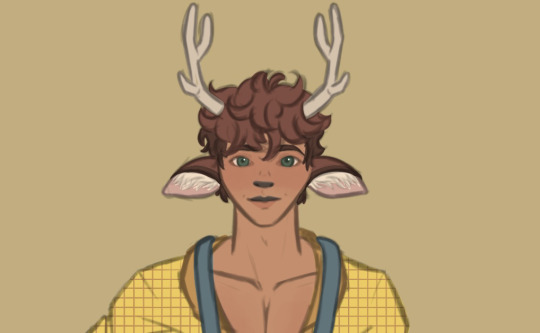


Here's Findley Oisin (finnd-lee uh-sheen)!He's a cerunnia (ker-roo-nee-uh), one of the races I made up that's part deer part human inspired by the Celtic god, Cernunnos. Findley's very much a himbo with few thoughts in his head and very much whimsy and joy in his heart. He works on his family's farm up in the outskirts of the northern town of Dyrehirst. He'll run errands which often brings him down to Primsbrough.
Pronouns: he/him
Age: 20
Birthday: October 5th
Again, I'd love to hear any questions about him that anyone has!!
#he's my favorite out of the main 3 tbh#so silly#so little thoughts#art#oc#original character#himbo#deer boy#cernunnos#celtic mythology#celtic myth#fantasy#high fantasy#faun#cervitaur#findley oisin#the primwood#novaposting
2 notes
·
View notes
Photo


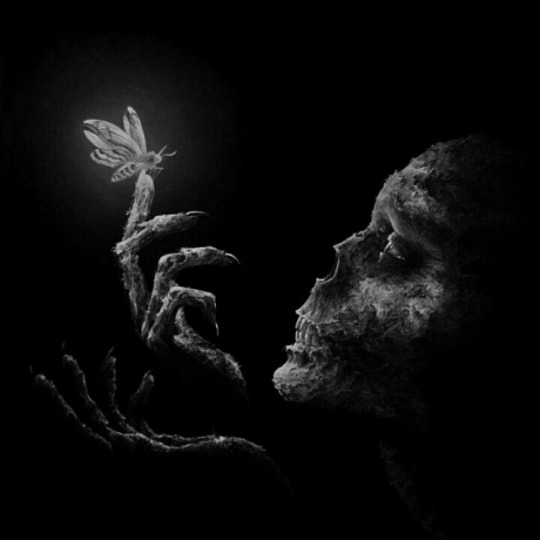


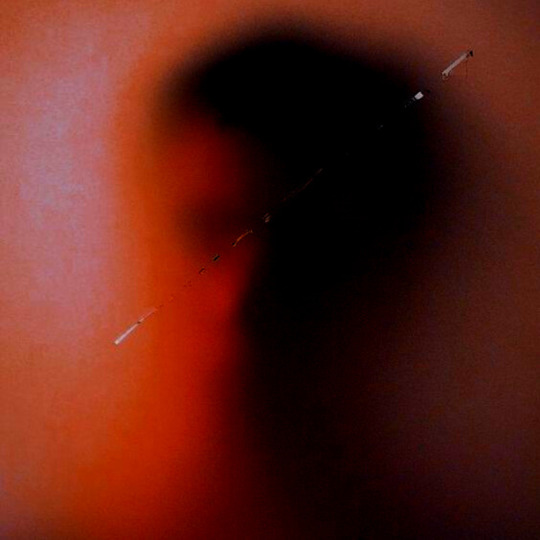

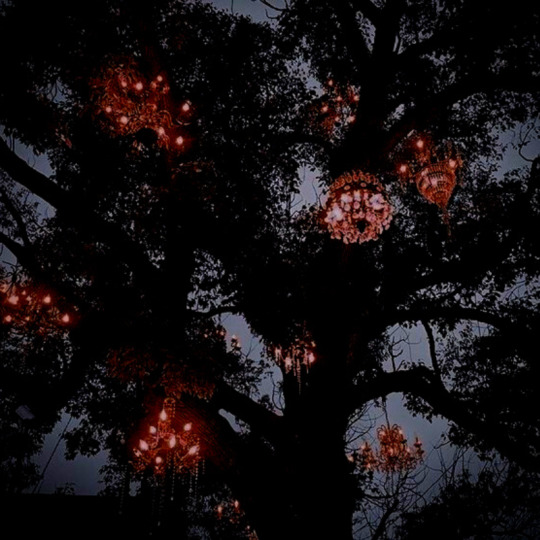

celtic mythology: the dagda
the dagda was chief of the tuatha dé danann, the foremost of the irish ancestral gods. highly skilled and wise beyond measure, he was not only the god of life and death, but of seasons, agriculture, fertility, magic, and druidry as well.
#celtic mythology#the dagda#celtic myth#mythedit#gods#*mine*#requested#tried to represent death and life
369 notes
·
View notes
Text
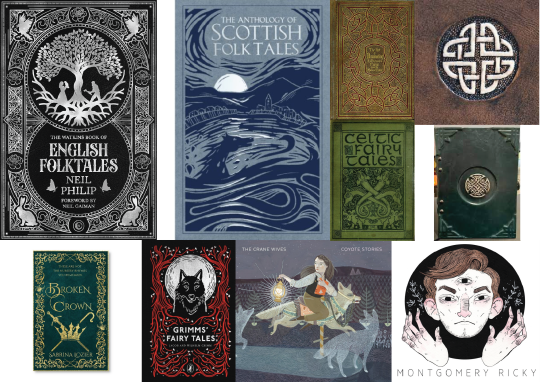
A collection of reference images that i'd like to inform my art during the celtic magazine section of my uni corse.
obviously i want to use the celtic knot imagery and simple/contemporary design of the books, maybe adding in more leather work and more textile feelings from the leather work images in the corner.
Also adding simple yet rustic feeling images like Ricky montgomery's album cover, could work for more light hearted parts of the stories or throughout to enhance the depressing theme's in the book muchj like his music.
kinda want the feeling of a contemporary fairytale book.
Also the Neil Philip's English folk tales has a gorgeous cover that i's like to try and replicate in a starter page for my entire section of the magazine, also an amazing read with good visuals and a starter page with just hand drawn rose's on it, not too expensive from forbidden planet either.
#adobe illustrator#typography#celtic#celtic mythology#irish mythology#irish#grimm's fairy tale classics#ricky montgomery#leather#leatherwork#celtic knot#celtic myth#moodboard
4 notes
·
View notes
Text
The Irish Gods pt. 1
After reading several texts, I've painted this picture of the Irish gods.
There is the war god Net. His descendants procreate with his granddaughter Ethniu. She has 7 sons: the smith, the carpenter, the wright, the physician (Dian Cecht), the king (Nuada), the druid warrior (the Dagda), and the god of every skill (Lugh).
Elatha, Net's grandson, is a Fomorian king. He is father to Bres, the Dagda, and Ogma the champion; though, one text makes Ogma the son of Ethniu.
The gods lived in islands in the northern parts of the world where they learned all their magic, sciences, and art.
They invaded Ireland. They sailed there, and clouds shielded their arrival.
They had four treasures: the cauldron that everyone left satisfied from, the spear no one could defeat, the sword that nothing could escape from, and the stone of destiny that shouted when the true king of the land put his foot on it.
They battled the Firbolg, the existing inhabitants, for Ireland. The Morrigan and her sisters cast clouds and rain of fire and blood over the Firbolg. The gods defeat the Firbolg. (The Firbolg and gods have common ancestors).
Nuada loses his hand in battle. A blemished king can't rule. Bres is made king in hopes his Fomorian side would render the Fomorians under the gods' power.
The smith god made a silver hand. Dian Cect attached it to Nuada, making a working silver hand.
One text says Bres was a bad king. He chose the Fomorian side of his family. He made the Dagda build forts and Ogma carry wood. There was no food or drink at his court. The gods were taxed heavily, and all their wealth went to the Fomorians.
Miach, Diancecht's son, restores Nuada’s real flesh hand, unburying it, attaching it, and restoring it completely. Nuada is able to be king again. Diancecht was jealous of Miach, so he killed him. From his grave grew healing herbs. His sister gathered the herbs on a cloth, but Dian Cecht mixed them, and their healing knowledge was lost.
A poet made a satire about Bres. It embarrassed him and brought him dishonor. The gods told him they wanted to remove him as king. He went to his dad Elatha for help to battle gods. Elatha refused. Bres went to the Fomorian Balor for help. (Balor is the war god Net's son).
Meanwhile, Balor's grandson, Lugh, son of Ethniu and the god Cian (Dian Cecht’s son) comes to the god's court. They don't let anyone in without a skill. Lugh was the only one that had all the skills put together. They let him in. He was stronger than Ogma, and Nuada put him in charge of the war.
The Dagda slept with the Morrigan at the mouth of a river. Afterward, she gave him war intel and told him her plan: to kill one of the Fomorians. (Some texts say the Dagda and Morrigan are married to each other).
The Dagda’s daughter, Brigid, is married to Bres. She owns the king of the cows and king of the pigs. Her son with Bres is a spy. The son is killed by the gods, and Brigid is the first to cry and scream in mourning in Ireland.
The war was on. Dian Cecht and his kids made a healing well, filling the water with herbs. Anyone wounded who bathed in it was healed. Only people with their head cut off or brains bashed in could not be healed. The smith god and his brothers magically repaired the gods' weapons by the next day of battle.
Lugh defeated Balor in battle. Balor had an "evil eye." Whatever it looked upon was destroyed. Lugh hit the eye with his sling shot. The eye shot through the back of Balor's skull and killed several many Fomorians.
They spared Bres' life if he agreed to teach them the times to plant and harvest.
Nuada had died in battle, and Lugh was made king.
See pt. 2
#irish mythology#tuatha de danann#irish myth#pagan#irish lore#celtic myth#goddess#the morrigan#irish gods#witchblr
26 notes
·
View notes
Text
If you know where to look, a lot of characters in Arthuriana can be, are or implied to be sorcerers/Magic-users.
To put it another way, had Sir Dinadan been written by the Welsh or the Irish, King Mark would probably be dead a hundred times over from the force of Dinadan's songs.
"A strong warrior merely kills you. A good poet will damn you, your identity and your legacy forever until the end of time"
9 notes
·
View notes
Text
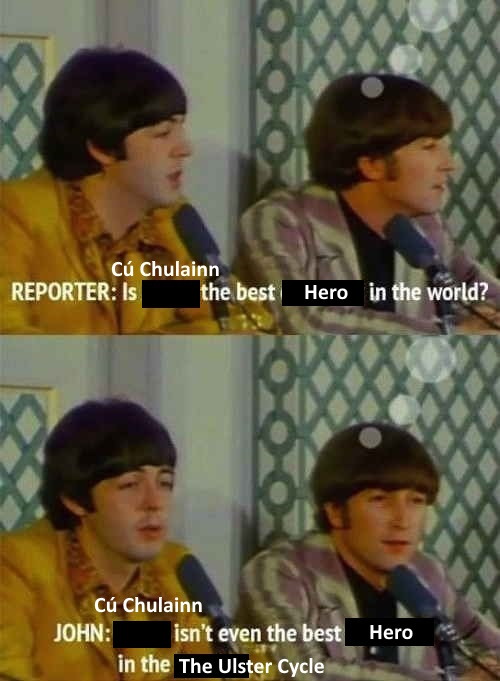
As the Near-If-Not-Current world expert on heroes in Medieval Irish Literature, this is my official stance.
Yes, I will be explaining myself.
Here? No, go read my PhD thesis in -checks watch- six months.
111 notes
·
View notes